Target Supplier
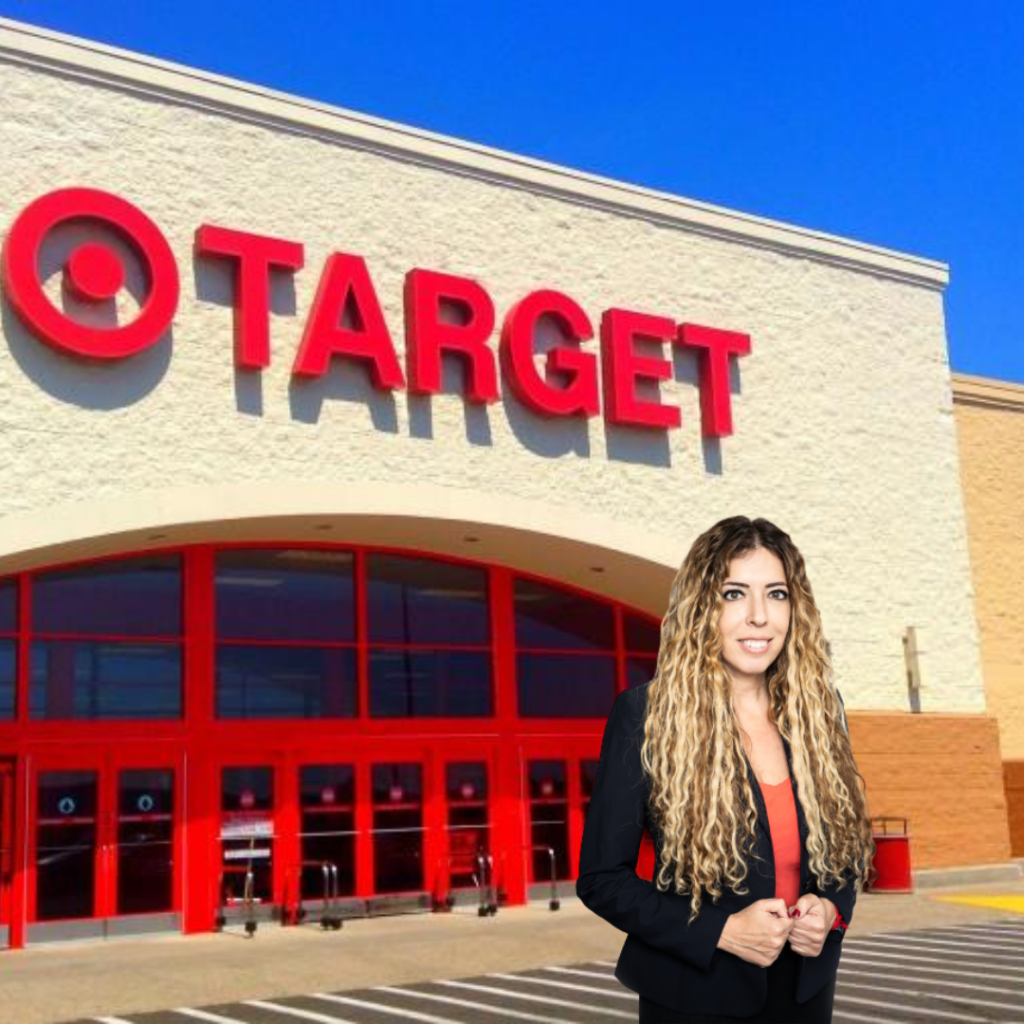
How to Assess Your Capabilities and Growth Plans Before Applying to Be a Target Supplier
Target’s approval for your products can be an enormously rewarding accomplishment for any CPG brand, serving to validate both vision and product line while driving revenue growth and brand loyalty for your business.
Target sets stringent standards for its in-store products and prioritizes companies who practice transparent sourcing and manufacturing practices. Becoming a Target supplier is no simple undertaking.
1. Get a Foot in the Door
Target is one of the largest US retailers, meaning thousands of small product brands vie each year to land shelves there. Only some can make the grade; what separates those who make it and those who fail?
To become a Target supplier, it will require having an effective sales pitch with impressive metrics to back it up. This may include showing strong demand within existing retail channels – something Crisp allows users to do easily by collecting sales velocity data.
Target stands out as a company with some of the strictest ethical sourcing and production practices, particularly for their private label offerings like Good & Gather and Market Pantry.
Target requires that its suppliers meet minimum volume requirements, with enough resources available to them to expand quickly enough and meet supply chain needs quickly enough to satisfy them. This may necessitate raising capital or adding staff – it is essential to weigh these expenses against potential revenue gains from an effective Target launch.
Target provides assistance with starting up, through its Forward Founders accelerator program for emerging CPG companies. This 10-week course features mentorship from Target executives as well as information about its supply chain network and more.
Target can make getting your products into their chain easier, and regional distribution with them could provide an ideal opportunity to test and demonstrate appeal within specific regions and markets. You will need to show data for sales in those specific markets during initial negotiations to demonstrate this success.
2. Reach Out to the Buying Team
Before approaching Target with your product idea, it is vital that you visit their stores and observe their merchandise to gain a clearer idea of their desired items. By visiting, it will also allow you to see which types of products they might need that might complement yours, while speaking with their store managers may help determine whether your idea fits in well there or not.
Making the buying team take notice is essential to getting your product into Target stores, and once they do it’s important that you present it in an effective manner to make sure it gets all of its deserved consideration. This will ensure your product won’t get overlooked!
Target stands out from its competition with its emphasis on speed and convenience, from curbside pickup to online delivery services, by making purchasing easier than ever for customers. Their goal is to ensure as smooth a shopping experience from bananas to workout apparel as possible for shoppers. Target has invested in special sortation centers which enable it to move purchases from stores closer to where they will end up rather than keeping them packed into trucks on their journey to customers’ homes.
3. Be Prepared
Selling CPG brands through Target can be an enormous boost for small CPG manufacturers. Target offers an expanding geographical reach and significant cash flow as they tend to purchase in bulk, but supplying these products may prove challenging if your supply chains aren’t optimized for retail environments like Target’s. They have stringent product safety and quality standards as well as additional regulations when it comes to children’s products – so before applying as a Target supplier it is wise to assess production capacity as well as growth plans before applying as a vendor.
Target operates an effective on-time delivery program and expects suppliers to adhere to appointment dates and meet expectations; failing to do so could incur heavy fines and compromise the profitability of their partnership agreement.
Target is dedicated to responsible product sourcing and will not tolerate any illegal labor practices. Companies manufacturing for their store brands can expect annual inspection of their facilities to ensure compliance. Target also supports net zero greenhouse gas emissions by engaging vendors that align with its Target Forward sustainability program.
Target is committed to diversity and inclusion and offers programs designed to invest in, provide access to and recognize businesses owned by women; Black, Indigenous and people of color owned businesses; veteran owned firms; as well as LGBTQ+ owned firms. For more information, read Target’s Supplier Diversity Standards.
Domestic sellers must open a business bank account for electronic funds transfer (EFT). Foreign sellers may use an international EDI system to communicate with Target’s accounts payable department. An EDI system uses computer-to-computer communication in a standard format to exchange data. There may also be specific paperwork requirements such as bills of lading and case counts that need to be submitted with each order – for more details contact a Target buyer directly.
4. Work with a Broker
Establishing an account with Target may seem overwhelming, but many brands have succeeded by working with a broker. A broker is someone with key connections within Target who can act as an intermediary between your brand and their buying team and help navigate Target’s terms of service and supply chain requirements that can often be quite complex.
Target requires its potential suppliers to meet stringent quality assurance standards while meeting additional criteria relating to diversity in products and supplier practices. Target has numerous initiatives underway that support women, Black, Indigenous and People of Color consumers; veteran-owned businesses (Simplay3 furniture and Maud Borup sweet treats); as well as LGBTQ+ founders.
Target also requires its suppliers to adhere to Responsible Sourcing standards, providing documentation that proves all products were sourced ethically. Target also ensures all workers receive living wages and do not work under unsafe conditions, and requires third-party sellers to carry a minimum liability coverage of $1.5 million insurance policies.
Once you have an account with Target, the next step will be completing their supplier portal paperwork. This includes product details as well as company delivery schedule and arrival agreements at distribution centers. While Target won’t likely place large orders immediately, their volume should increase as they see sales performance increase.
At this critical juncture, it’s vital that you have an aggregation platform ready to present your data to Target’s buying team. This could range from something as basic as a Crisp dashboard to more advanced enterprise analytics platforms – using one with access to sales and inventory data across thousands of store locations can demonstrate to the buying team that your brand is ready for Target.
5. Be Flexible
As well as demonstrating your products are worthy of being in Target stores, you must also be prepared to quickly scale operations if the retailer decides to increase orders. That is why it is vitally important that you assess both your capabilities and growth plans prior to submitting an application.
Target as a major retail giant must remain flexible in how it does business, including rolling out new rules that require domestic suppliers to provide single-day delivery dates instead of two to 12 day grace periods for orders. Target has also raised fines for late shipments.
These modifications are meant to increase Target’s speed in getting online purchases to shoppers quickly. Target has implemented additional sortation centers designed to reduce how long packages sit on store shelves before being collected by carrier partners, and Mulligan states they sweep store backrooms three or four times daily in order to clear space for packages to move closer toward their destinations.
Additionally, they’re working towards making online sales more tailored and relevant for customers – this requires access to lots of customer data – thus necessitating working with an experienced data management and analytics provider who has experience within retail.
The company also strives to ensure it promotes and facilitates diversity within its supply chain, by offering various programs designed to support companies which are at least 51% owned, controlled or operated by women; Black, Indigenous or People of Color people; LGBTQ+ persons or veterans or people living with disabilities.
Step-by-step training on how to sell to retail chains!
We explain exactly how to do that and how to get started today. I’ve taught over 100,000 of companies over the years across the globe on how to get your products to the stores. And so we’re here to support you. Or please subscribe to our Youtube channel and or be on the lookout for additional training that we create.
We are here to expedite the process of generating revenue with your physical products and that’s what we’re all about. Take a look at our advanced training, live events, certification programs and so much more.
In this training, I will discuss some of the things to think about when approaching a retailer to sell your products and become a vendor. Hope it helps! 🙂
Karen Waksman,
Retail MBA
Questions? Contact Us!
1-855-Retail-2 (Call or Text)
Email: info@retailmba.com
Retail MBA provides a step-by-step formula on How to Sell to Major Retailers, Online Retailers, Smaller Retailers, Catalogs and More. No Experience Required! These solutions continue to convert for clients year-over-year! These are Time-Tested and Proven Strategies that we utilize ourselves when going after stores! Everything we teach, we test. Want access to these formulas? ANY one of our programs and coaching systems gives you access to them now. With that said…
Here are 5 Easy Ways to Work with Us:
1) Free Training – If You Would Like to Join Our Next FREE Webinar Training Called “Retail Chain Store Secrets – How to Sell to Major Retail Chains. No Experience Required” Then Sign Up NOW To Learn All About Selling into Retail Chains By Clicking Here!
2) Retail MBA Year Long Coaching and Training System – Our Year Long Coaching and Training System with Karen Waksman is POWERFUL! This is our most popular training and coaching system! We walk you through how to approach, pitch and sell to retail chains and we coach you along the way! Join us by Clicking Here!
3) Masterclass Intensives – Want to Join our Next 4 Week Elite Retail MBA Masterclass Intensive? These Intensives Are EPIC for people who Love Fast Paced Learning – Homework, Retail Coaching, Developing Your Strategy, Buyers Contacts and More! These Events Are Held Every Quarter. Join us by Clicking Here!
4) Done-for-You Program – If You Want Karen Waksman and Her Team to Reach Out to Your Top Dream Retail Chains On Your Behalf – And You Have a Retail-Ready Product, Check Out our Epic Done-For-You Service by Clicking Here!
5) In Person Events – If You Want to Learn LIVE and Meet Karen Waksman in Person at Our Next “America’s Next Retail Product: LIVE Event with Other Like-Minded Individuals in Beautiful San Diego, CA! We Would LOVE to Have You Join Us by Clicking Here!
Check Out Our Additional Blog Posts Here:
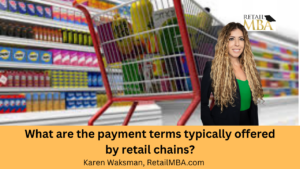
Retail Terms
Retail Terms – What are the payment terms typically offered by retail chains? Click Here to Learn More!
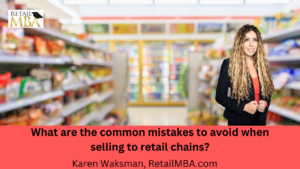
Retail Vendor
Retail Vendor – What are the common mistakes to avoid when selling to retail chains? Click Here to Learn More!
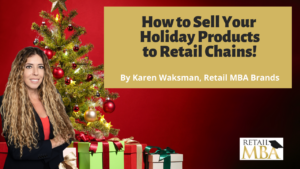
How to Sell Your Holiday Products to Retail Chains
New Training on How to Sell Your Holiday Products to Retail Chains
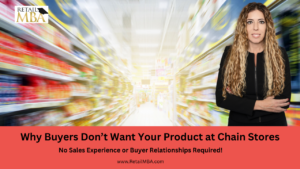
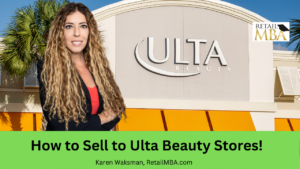
Ulta Beauty Vendor
Ulta Beauty Vendor – How to Sell to Ulta Beauty Stores. Click Here to Learn More!
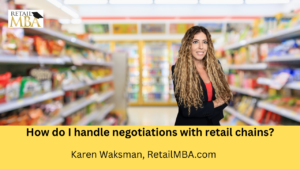
Retail Strategy
Retail Strategy – How do I handle negotiations with retail chains? Click Here to Learn More!

